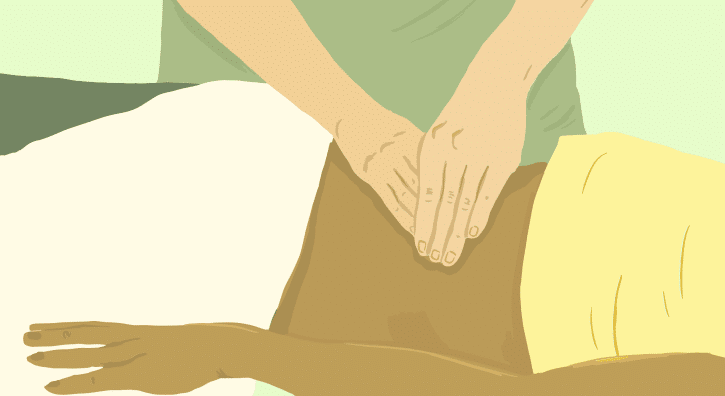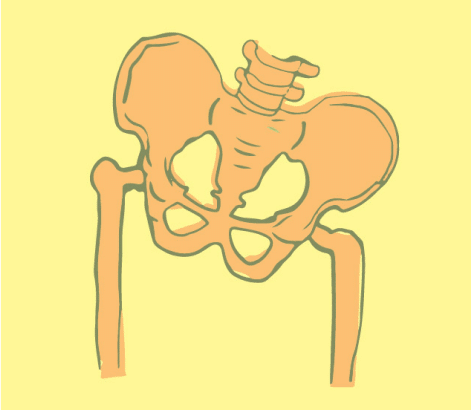
When transgender or gender non-conforming people utilize packing, tucking, or binding techniques or undergo gender affirming surgical procedures, it can have negative effects on the trunk, lower extremities, pelvic floor and surrounding structures resulting in pain and dysfunction. Pelvic floor physical therapy can assist in minimizing or eliminating the pelvic, back, and chest pain and urinary, bowel and/or sexual dysfunction that can arise from these techniques and surgical procedures.
Symptoms
- Pain from surgical scars
- Pain with vaginal penetration
- Inability to achieve vaginal penetration
- Difficulty or inability to achieve orgasm
- Urinary dysfunction including urgency, frequency, hesitancy, incontinence and spraying
- Pelvic pain
- Chest and back pain
- Shoulder pain

When transgender or gender non-conforming people utilize packing, tucking, or binding techniques or undergo gender affirming surgical procedures, it can have negative effects on the trunk, lower extremities, pelvic floor and surrounding structures resulting in pain and dysfunction. Pelvic floor physical therapy can assist in minimizing or eliminating the pelvic, back, and chest pain and urinary, bowel and/or sexual dysfunction that can arise from these techniques and surgical procedures.
Symptoms
- Pain from surgical scars
- Pain with vaginal penetration
- Inability to achieve vaginal penetration
- Difficulty or inability to achieve orgasm
- Urinary dysfunction including urgency, frequency, hesitancy, incontinence and spraying
- Pelvic pain
- Chest and back pain
- Shoulder pain


Causes of Symptoms
- Surgical scars
- Stenosis of neovagina
- Loss of neovagina depth
- Pudendal neuralgia
- Persistent granulation tissue
- Pelvic floor dysfunction
- Compression
- Lower extremity muscle dysfunction
- Poor posture
Causes of Symptoms
- Surgical scars
- Stenosis of neovagina
- Loss of neovagina depth
- Pudendal neuralgia
- Persistent granulation tissue
- Pelvic floor dysfunction
- Compression
- Lower extremity muscles dysfunction
- Poor posture

Diagnostic Challenges
Unfortunately, most medical providers, including pelvic floor physical therapists, are unfamiliar with packing, tucking, and binding techniques as well as gender affirming surgical procedures. These surgical procedures are not widely available in the United States nor is education for health care providers on how to care for these patients. At PHRC we have been fortunate to work in geographic locations where these procedures are available and we have had the opportunity to work with the surgeons providing these services. We have also sought out specific training on how to best care for this patient population as physical therapists. As a result, we have had the opportunity to successfully treat many patients utilizing these techniques and undergoing these surgical procedures.
Diagnostic Challenges
Unfortunately, most medical providers, including pelvic floor physical therapists, are unfamiliar with packing, tucking, and binding techniques as well as gender affirming surgical procedures. These surgical procedures are not widely available in the United States nor is education for health care providers on how to care for these patients. At PHRC we have been fortunate to work in geographic locations where these procedures are available and we have had the opportunity to work with the surgeons providing these services. We have also sought out specific training on how to best care for this patient population as physical therapists. As a result, we have had the opportunity to successfully treat many patients utilizing these techniques and undergoing these surgical procedures.
Treatment:
How We Can Help You

Pelvic floor physical therapy can assist the transgender and gender non-conforming population for both surgical procedures and nonsurgical techniques they may utilize or undergo. The nonsurgical, or in some cases pre-surgical, technique trans men may utilize is binding and the techniques trans women may utilize are tucking and packing. Physical therapy can ensure safety when binding to avoid chest, shoulder, and back pain, numbness, and scarring and preserve good posture. Physical therapy can educate trans women who utilize packing or tucking to avoid gait abnormalities and muscle dysfunction in the lower extremities. For those who undergo gender affirmation procedures, pelvic floor physical therapists can reduce pain from surgical scars, enable or improve neovaginal penetration during intercourse, improve ability to orgasm, normalize urinary function and eliminate pelvic pain. Typically, patients are safe to begin physical therapy eight weeks after their surgical procedure, but this is very dependent on the type of procedure performed. Therefore, we communicate with your surgeon to determine when it is safe to begin rehabilitation. During the evaluation, the physical therapist reviews your history and symptoms with you. If you have undergone a surgical procedure we review your operative report. Importantly, we understand what you have been through. During the physical examination the physical therapist examines muscles, tissues, joints, nerves, and movement patterns. Once your physical therapist completes the examination they review your findings with you. The physical therapist creates an assessment which explains how you developed pain and/or dysfunction and creates short and long-term goals for your treatment plan. Typically, the frequency of physical therapy treatment is one to two times per week for roughly 12 weeks. You are given a home exercise program to compliment your in-person sessions, and your physical therapist will help to coordinate your recovery with your surgeon and the other members of your treatment team. We are here to work with you and on your behalf so you no longer have to navigate this process on your own! We will help you reach your goals and help you live the life you want to live.
Treatment:

How We Can Help You
Pelvic floor physical therapy can assist the transgender and gender non-conforming population for both surgical procedures and nonsurgical techniques they may utilize or undergo. The nonsurgical, or in some cases pre-surgical, technique trans men may utilize is binding and the techniques trans women may utilize are tucking and packing. Physical therapy can ensure safety when binding to avoid chest, shoulder, and back pain, numbness, and scarring and preserve good posture. Physical therapy can educate trans women who utilize packing or tucking to avoid gait abnormalities and muscle dysfunction in the lower extremities. For those who undergo gender affirmation procedures, pelvic floor physical therapists can reduce pain from surgical scars, enable or improve neovaginal penetration during intercourse, improve ability to orgasm, normalize urinary function and eliminate pelvic pain. Typically, patients are safe to begin physical therapy eight weeks after their surgical procedure, but this is very dependent on the type of procedure performed. Therefore, we communicate with your surgeon to determine when it is safe to begin rehabilitation. During the evaluation, the physical therapist reviews your history and symptoms with you. If you have undergone a surgical procedure we review your operative report. Importantly, we understand what you have been through. During the physical examination the physical therapist examines muscles, tissues, joints, nerves, and movement patterns. Once your physical therapist completes the examination they review your findings with you. The physical therapist creates an assessment which explains how you developed pain and/or dysfunction and creates short and long-term goals for your treatment plan. Typically, the frequency of physical therapy treatment is one to two times per week for roughly 12 weeks. You are given a home exercise program to compliment your in-person sessions, and your physical therapist will help to coordinate your recovery with your surgeon and the other members of your treatment team. We are here to work with you and on your behalf so you no longer have to navigate this process on your own! We will help you reach your goals and help you live the life you want to live.
How Can We Help You?
Please use the form below to send us any questions or comments. You must include your e-mail address in order for us to send a response. Please be assured that all of your information will be kept confidential.

Join The Newsletter. Win a copy of our book, “Pelvic Pain Explained!”
We love getting to know our website visitors. Please tell us a little bit about yourself and get the latest info via PHRC e-newsletter!
*Subscribers automatically eligible to win our book, “Pelvic Pain Explained.”
At its heart, Pelvic Pain Explained is the story of how patients develop pelvic pain, the challenges patients and providers face throughout the diagnosis and treatment process, the difficult task of sifting through the different available treatment options, and the impact that an “invisible” condition has on a patient’s life and relationships, and much more.


